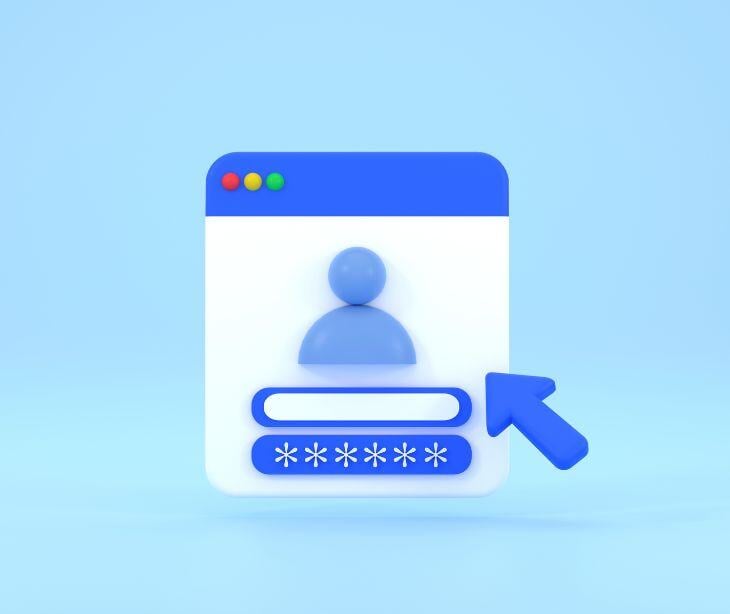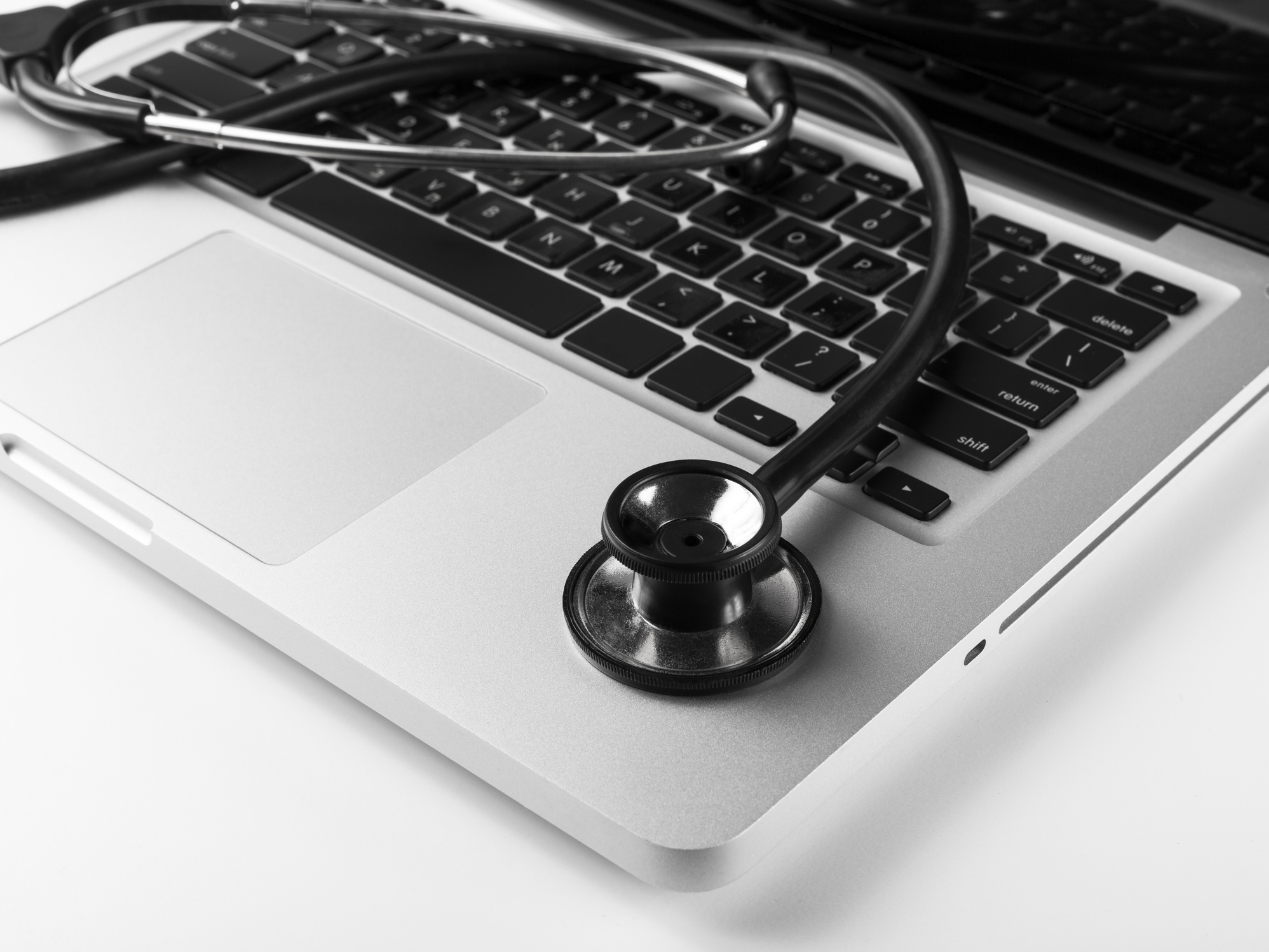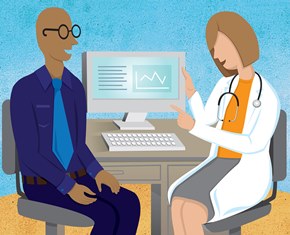5 min read
Why patient portals are inconvenient: An evidence-based perspective
Caitlin Anthoney May 10, 2024

Patient portals often fall short of the seamless experience they promise, making them more inconvenient than helpful. Instead, providers should use HIPAA compliant emails for user-friendly, convenient, and secure patient-provider communication.
What are patient portals?
The University of Rochester Medical Center describes a patient portal as “a web-based tool [that] allows you to have access to your health information 24 hours a day. A patient portal can provide different features. This varies based on the system that your provider uses. Typically, you can log on to your patient portal using a secure website with a username and password.”
While patient portals have become more common in healthcare, their widespread adoption has not necessarily translated into improved patient experiences or outcomes.
Despite their intended convenience, many patients still encounter challenges when using these digital platforms, like complex user interfaces and concerns about privacy and security.
Patient perspectives
Disinterest and inconvenience
Patients are often disinterested in using a patient portal and if they do, the portals often turn out to be an inconvenience with complex user interfaces.
A study on portal use in an acute care patient portal intervention showed that patients decline portal use because “they were not interested (56.52%)”, or “it involved too much technology (14.52%), having difficulties in using or accessing the portal. Even among those who opted to use the portal, 65% did not use the portal beyond the first day.
Complex user interfaces
Patient portals often have complex user interfaces that can be confusing and difficult to navigate, especially for older adults or those less familiar with technology. A systematic review of patient and provider attitudes toward the use of patient portals explains, “The user-friendliness quality was a concern for patients…who are not familiar with advanced technology [finding it] difficult to navigate the patient portal.”
In a recent cross-sectional survey of pharmacy customers’ experiences with a patient portal, some patients stated “Navigating the service and searching for information is difficult” and others reported “a delay before health data are incorporated into the service.”
More specifically, patients found “difficulty in navigating the service and searching for information” (21.9% of participants) as the service was “badly organized and had problems switching between pages”. Others reported “delayed health data (13.2% of participants)”, “service problems” (like the app not opening properly - 10% of participants), different “patient portals getting mixed up” (10%) and “inconveniences in logging in” (8.7% of participants).
Similarly a study on usability testing for novice users of pediatric patient portals showed that users had concerns about the confusing layout and lack of clarity on the sign-up/login process, poor page organization, and information overload.
In addition, “they also wanted changes to the interface that would make finding things more obvious or available with fewer clicks, such as allowing other care providers access to the portal with one step…electronic confirmations of sent messages… additional reminder features [and] links to research.”
Concerns for patient privacy
Patients may be worried about the security of their protected health information (PHI) stored in digital platforms, which could lead to data breaches and unauthorized access. This worry is shown by the systematic review mentioned earlier, which identified security concerns as one of the most prevalent negative perceptions, occurring in 41% of the articles analyzed in the systematic review above.
This is seen in a mixed-method study on the use of information and communication technology among patients where a participant explicitly states, “I don’t trust the apps. General public apps. I mean, you never know where they’re coming from, or who’s running them, or where the information goes, or how that all occurs.”
Moreover, ongoing research on redesigning and streamlining the refill process for MyBoynton patient portal explains that having patients register for multiple portals “may also increase the risk of data breaches, potentially compromising patient privacy and leading to negative consequences for both patients and healthcare providers.”
Similarly, “some users find [additional] log-in credentials… inconvenient,” according to a study on system and user views on portal engagement. As another participant in the earlier-mentioned mixed method study states, “Sometimes you have problems getting in, you have to change your password, now you forget your password, you got to resetup a new password…”
Overall, users can get frustrated when dealing with multiple login credentials for different portals and avoid logging in altogether, leading to decreased patient engagement.
Provider perspectives
Concerns about implementation
Providers express many concerns with patient portals, stating that it has “potential to generate more work, confuse patients, alienate non-users, and increase health disparities,” as evidenced by an interview study on primary care providers’ views of patient portals.
A nurse also expresses concern for patients who lack digital literacy, “Every time they come they have the same question, the same problem, and they’re just not understanding it and it makes them feel not wanting to come here if somebody’s gonna be pushing something like that [the portal] on them. They feel like we’re pushing it.”
Increasing health disparities
The effectiveness of patient portals depends on patients’ access to technology and their ability to navigate online platforms. For example, “Patients with insurance, higher education, or better access to technology would benefit from the additional services of patient portals while older or vulnerable patients who do not use portals would become further disadvantaged.”
An ethical analysis on billing for electronic patient-physician communication states, “Despite the push for widespread EHR portal utilization, disparities persist among Asian, Black, and Hispanic patients compared with non-Hispanic White patients, even after accounting for Internet access variations. Additionally, portal enrollment and usage are lower among those in lower socioeconomic groups, from rural areas, and older patients.”
This could potentially increase health disparities, widening the gap between those who can use healthcare resources and those who cannot.
Related: Using email and text messaging in health advocacy
Low patient engagement
Low patient engagement persists in patient portals despite efforts to promote healthcare access and communication. Many patients do not embrace these digital platforms, leading to underutilization of the available features.
“Despite our best efforts, nobody really used it even after we got about 100 sign-ups," shared an administrator in the interview study. A physician admitted, "A lot of my patients haven’t signed up for it, so I don’t use it to communicate systematically with them. I don’t think of sending them letters or communicating with them on [the portal]." Reflecting on their experience, a nurse said, "They wanted us to check it every day and that type of thing. As I checked it, like I said, it was the same thing the whole time. I just stopped checking it."
These statements show low engagement in using the patient portal, which may lead to missed opportunities for communication and convenience in managing healthcare.
Concerns for patient privacy
Providers express concern for the security of patients' protected health information (PHI) stored in patient portals given increasing data breaches and cyberattacks. Providers in the interview study explain, “Any new portal was seen as ‘a potential information leak’, that could occur through a number of means: a stolen password, a shared password, or hackers.”
So, providers often “limit the information sent to the portal to ensure compliance with confidentiality laws, thus limiting the utility of the portal,” while others may choose to use additional identity verification processes, says a study on engaging adolescents in using online patient portals.
More specifically, “… some organizations did not permit portal access to adolescents based on interpretation of state confidentiality laws. Other participants described barriers [to] sharing information between parents and adolescents and concerns about confidentiality, which created a ‘chilling effect’ because clinicians could not guarantee confidentiality to the adolescent.”
The solution: HIPAA compliant emails
Convenience
HIPAA compliant emails allow patients to communicate with their physicians without navigating complex portal interfaces. Additionally, HIPAA compliant emailing platforms, like Paubox, deliver emails directly to users’ inboxes for familiar and accessible communication, increasing patient engagement and satisfaction.
Eliminates complex user interfaces
HIPAA compliant emails are a simpler and more familiar way to communicate, reducing the technological burden on patients. Patients can access health information and interact with healthcare providers without struggling with navigation issues.
Go deeper:
- How HIPAA compliant emails can increase health literacy
- The role of HIPAA compliant email in patient engagement
Protects patient privacy
Providers can mitigate security concerns by using HIPAA compliant platforms, like Paubox. These platforms offer encryption and access controls, safeguarding PHI and reducing the risk of data breaches and unauthorized access.
Streamlined communication
HIPAA compliant emails offer streamlined communication that aligns with existing workflows, reducing the burden on healthcare providers. Additionally, it allows providers to share information among care team members, leading to better coordination of care and improved health outcomes.
Go deeper: Using HIPAA compliant emails to improve provider collaboration
FAQs
What are HIPAA compliant emails?
HIPAA compliant emails are secure email platforms that adhere to the regulations outlined in the Health Insurance Portability and Accountability Act (HIPAA) to protect patients’ protected health information (PHI).
Can patients request additional support or clarification via email?
Yes, patients can directly email their providers for clarification, their provider can then respond with a HIPAA compliant email, offering support while ensuring patient privacy.
Can HIPAA compliant emails include attachments, like medical images or documents?
Yes, HIPAA compliant emails can include attachments containing medical images, documents, or other sensitive information, protecting patient privacy and preventing unauthorized access during transmission and at rest.
Subscribe to Paubox Weekly
Every Friday we'll bring you the most important news from Paubox. Our aim is to make you smarter, faster.




